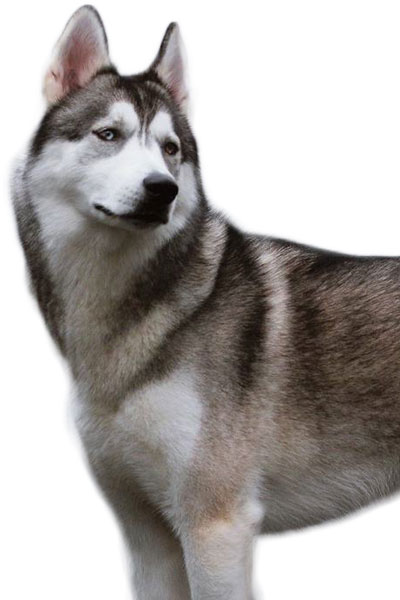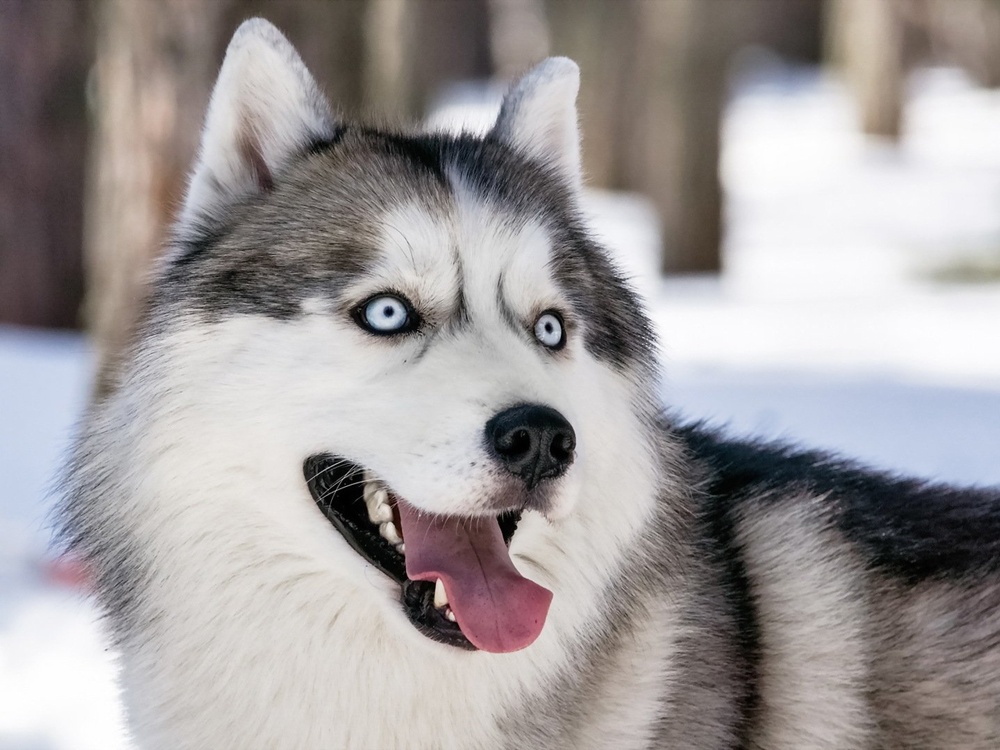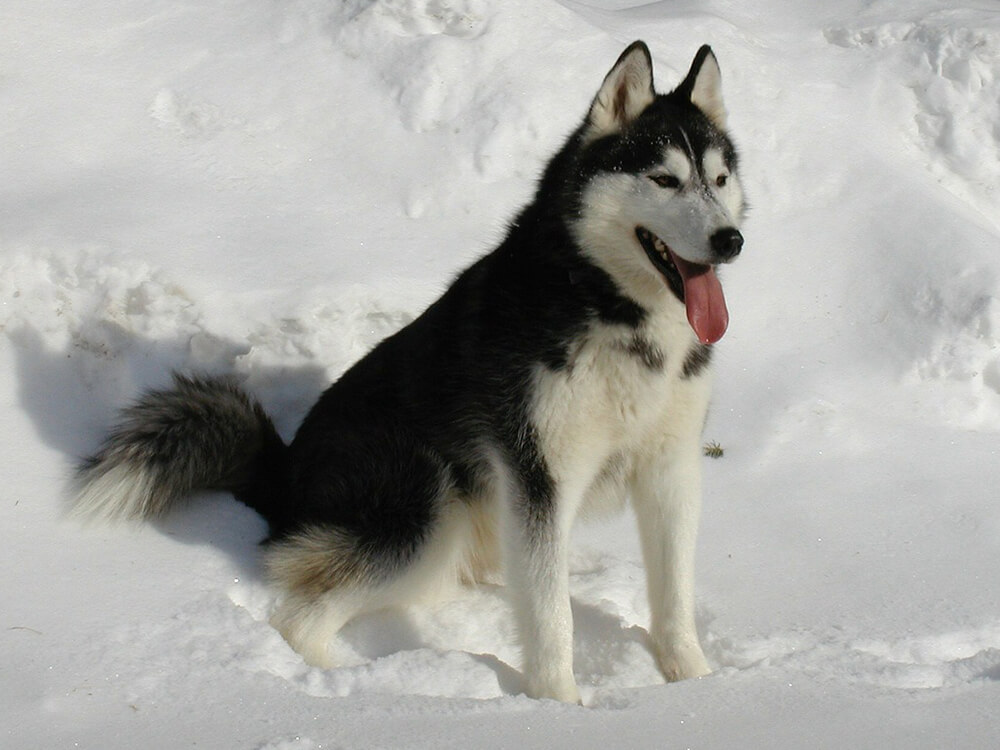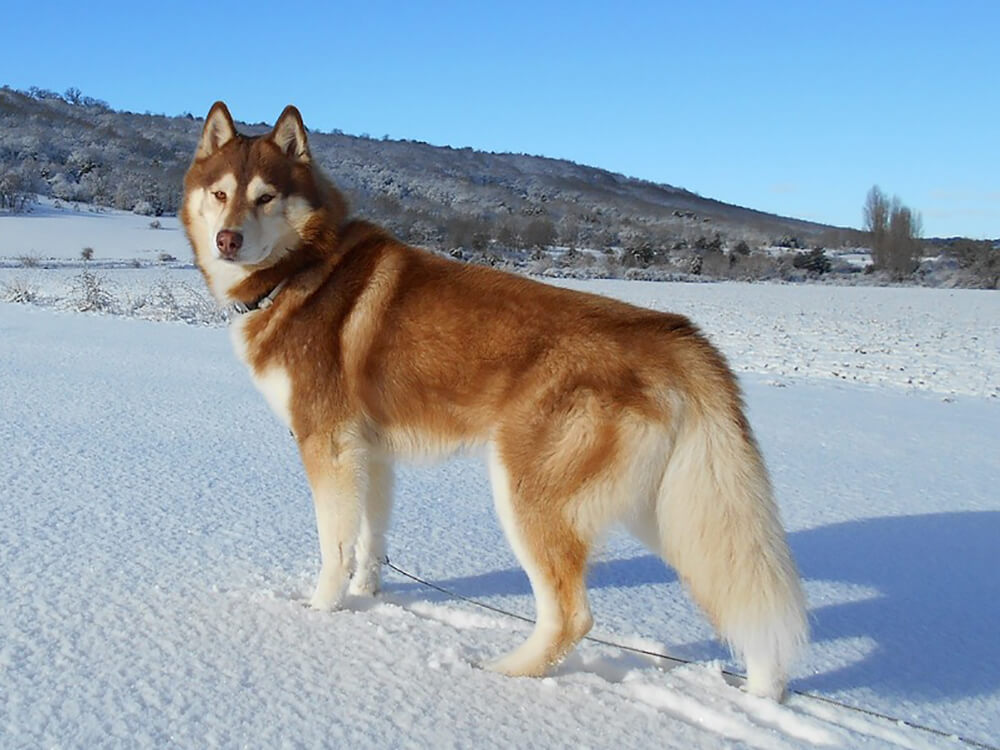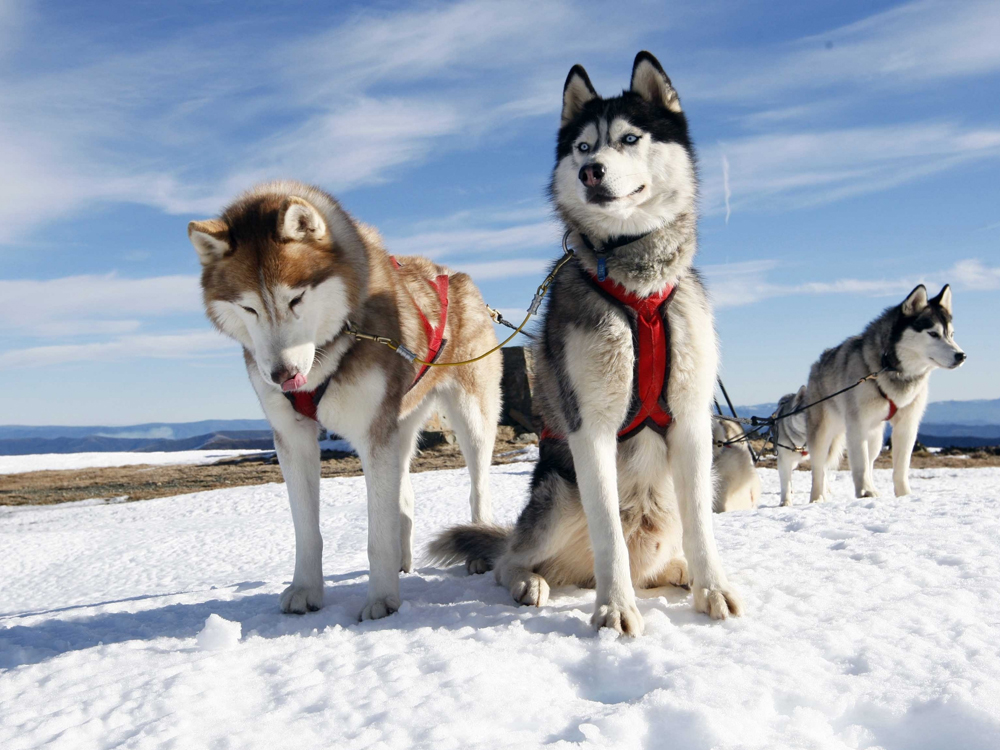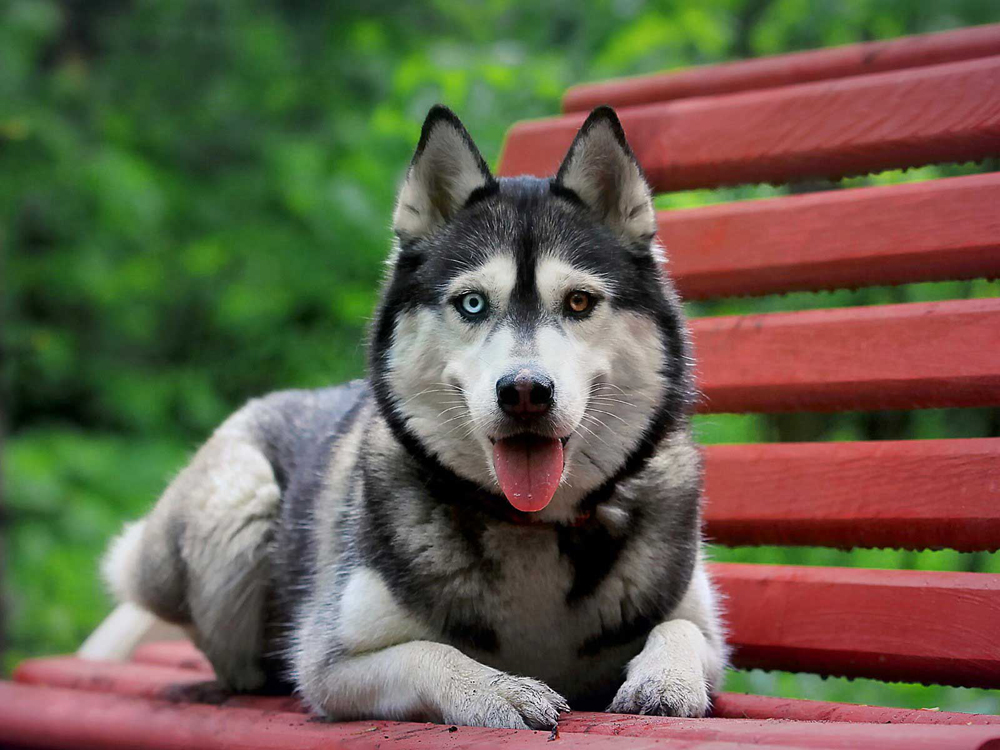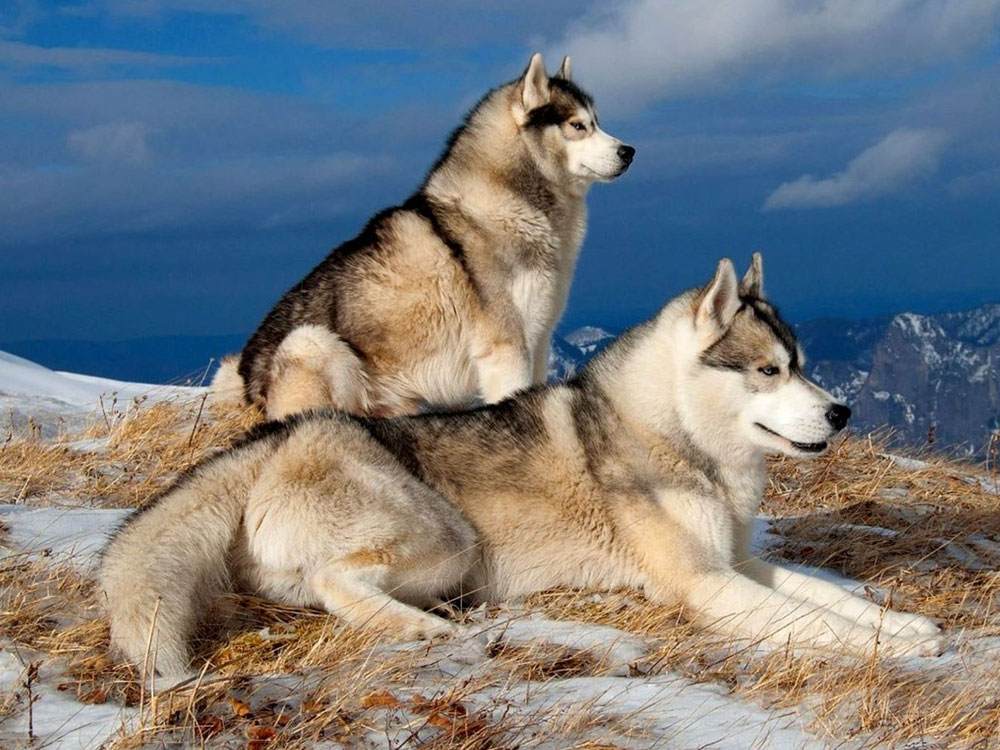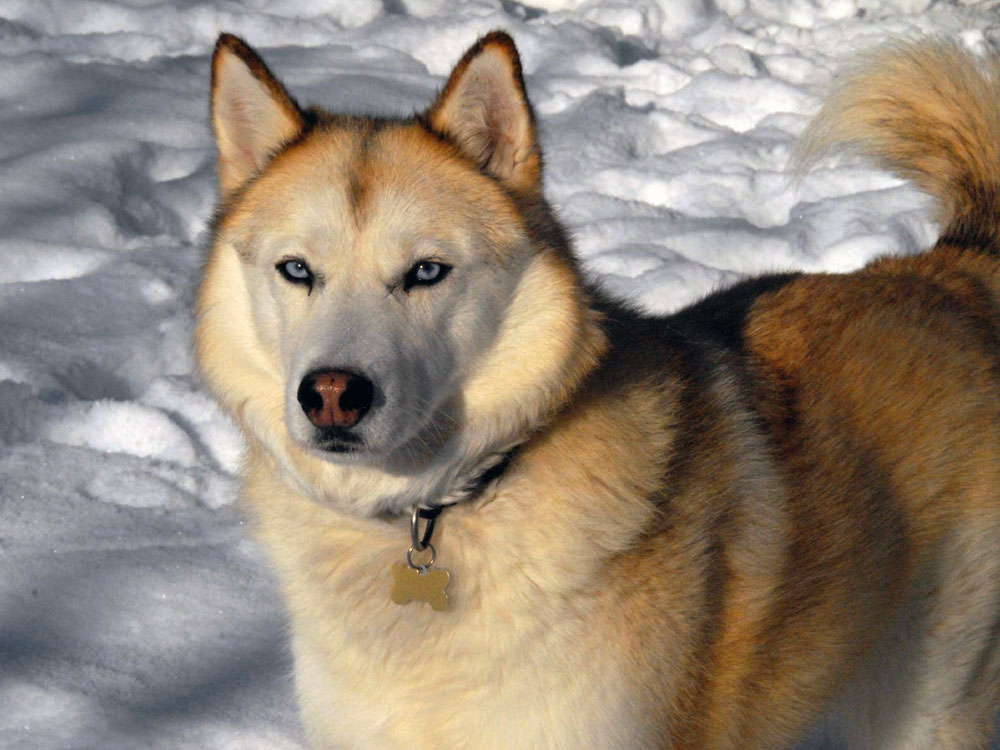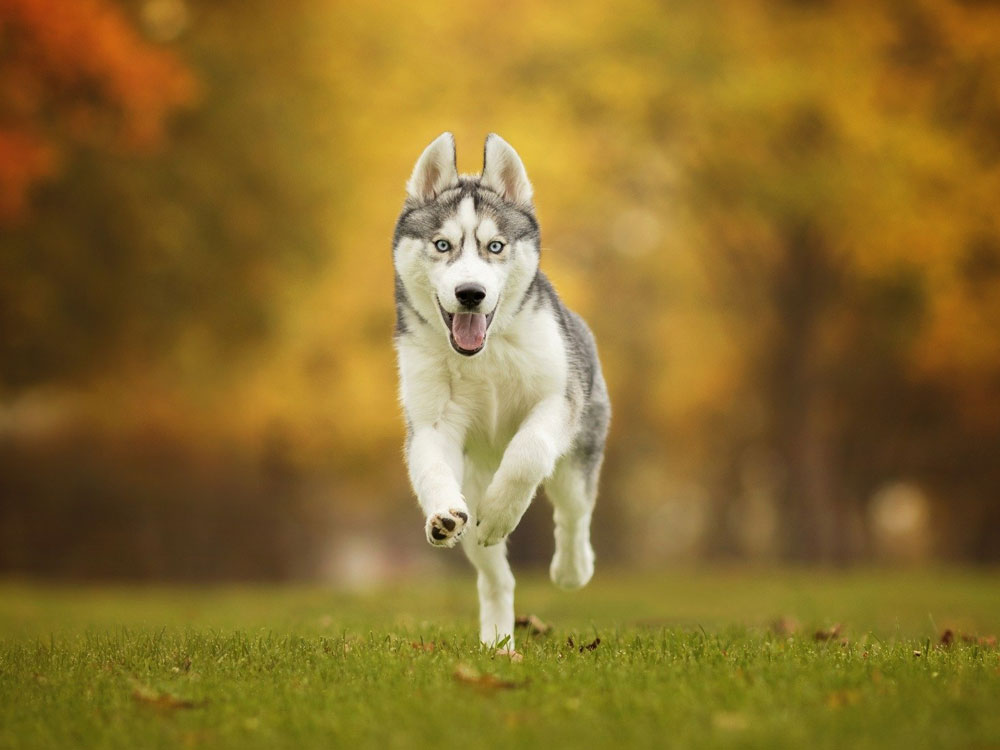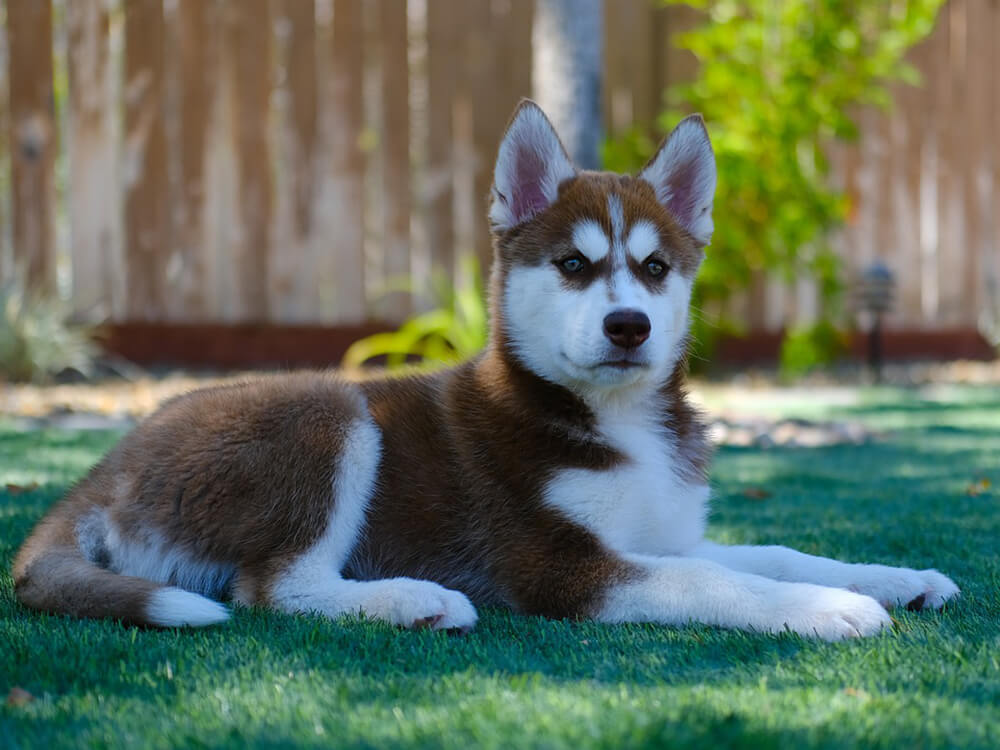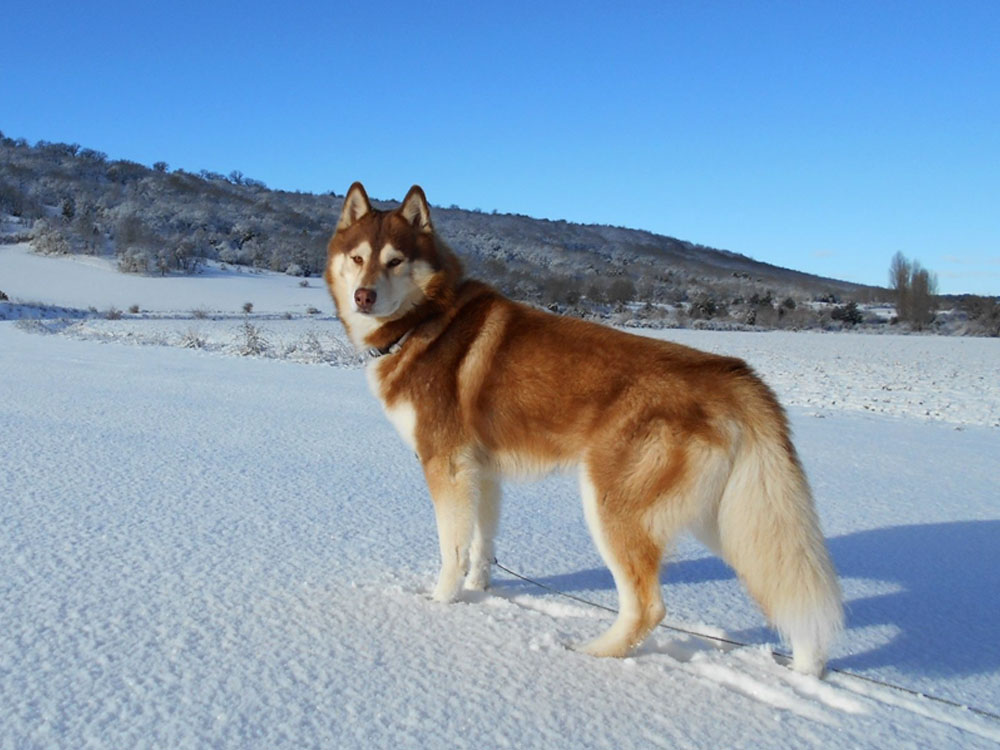
Siberian Husky Breed Pictures
Vital Breed Stats
| Height: | 51 - 56 cm M | 51 - 56 cm F |
| Weight: | 20 - 27 kg M | 16 - 23 kg F |
| Breed Group: | Utility Dog Group |
| Life Expectancy: | 11 - 14 years |
| KC Registered: | No |
Breed Characteristics
| Size: |  |
| Grooming: |  |
| Exercise Level: |  |
| Trainability: |  |
| Barking Level: |  |
| Good with Children: |  |
| Good with other pets: |  |
| Affectionate: |  |
| Protective: |  |
| Cost to Keep: |  |
Give a thumbs up if you love the Siberian Husky

0
More About the Breed
History
The Siberian Husky is believed to be a descendant of the first sled dog, which is one of the oldest dog breeds in the world. It is said to have originated amongst the Chukchi, a tribe inhabiting the northeasternmost part of Siberia. Known for its stamina and strength, the Siberian Husky is utilised both as a transportation dog and a family dog, helping families survive through harsh and unforgiving conditions to make transport possible and supplies available.
In 1908, the Siberian Husky breed was brought to Alaska to be used as sled dogs and later participated in popular long-distance dog-sled races, including the Iditarod Trail Sled Dog Race—an annual event to celebrate the six-hundred-mile delivery of the diphtheria serum, saving the epidemic-stricken city of Nome, Alaska, in 1925. The long-range relay of mushers ultimately brought fame to the breed. Until today, the Siberian husky’s role includes arctic search and rescue operations, but it is also considered an excellent family pet. The breed is officially recognised by the Kennel Club in the UK.
Appearance
Grooming
The Siberian Husky sheds throughout the year, a process called 'blowing coat' which requires a lot of grooming. Outside of the shedding season, it is easy to groom. Occasionally brush its coat with a slicker brush, trim the nails, and regularly brush its teeth two to three times a week using a vet-approved toothpaste. Make sure to have its ears checked weekly for redness or odour that may suggest infection. To keep the natural oils in Siberian husky’s skin and coat, the use of high-quality shampoo is needed.
Grooming isn’t necessarily a fun activity for dogs, so make it a positive experience early on. When you do your weekly exam, make sure it’s filled with rewards and praises to lay the groundwork for a positive experience during veterinary check-ups.
Temperament
The Siberian Husky is a charming, mischievous, intelligent, and loyal companion. It is friendly and not overly suspicious of people and other dogs. If you’re looking for a guard dog, a Siberian Husky is not for you. It is a highly active and playful dog with a sense of humour, which means your days will be full of action. It is also a bit unruly that it tends to dig and bury things. However, do not think of it as a destructive behaviour. It is only acting on centuries-old instinct. If you don’t want it digging anywhere, make sure you train it early on to dig in a specific spot.
When it comes to its living quarters, this dog breed’s temperament may not require a lot of space. But still it needs more than a small apartment in a crowded neighbourhood to release those energies. The Siberian husky will need enough room to run, take long walks, or hike. It loves exploring, so it is the best companions for people with an active lifestyle. However, due to its playfulness, a Siberian Husky’s interaction with kids must be supervised to avoid accidental injuries. It can have a very high prey drive that is challenging to curb, so it is best to avoid smaller pets like birds and rodents.
Intelligence
Training a Siberian husky is quite easy because it is smart and performs well in obedience tasks. Also because Siberian Husky is a pack dog, it acknowledges leadership especially if it recognises the owner as its leader.
Like every breed, Siberian husky has predispositions of temperament and intelligence. If you want your Siberian puppy to grow up to be a kind and obedient dog, expose it to different people and experiences when it is young.
Nutrition
Husky owners need to understand that dogs, in general, need little carbohydrates and with huskies, almost none. Other than a plant-based diet of fruits and vegetables, it should only be fed with meat (including organ meat), fat, and bone meal.
Typical calorie needs of a Siberian Husky:
- Adult Siberian Husky: 1057 calories per day
- Senior Siberian Husky: 865 calories per day
- Siberian puppy: 2537 calories per day
Feeding
Compared to dogs of similar size, a Siberian Husky requires a minimal amount of food per day.
A typical serving for an adult Siberian Husky is 1.5–2 cups of high-quality dry good or specially formulated raw diet daily, divided into two meals.
Health
Exercise
Cost of Ownership
Owning a dog requires a financial commitment because unlike other pets, the expenses don’t end at buying food and basic equipment. A rough estimate in raising and caring for a Siberian husky can be around £80 to £120 a month. High-quality food will cost up to £70 per month or £840 a year. A basic insurance policy will be around £20 a month and could rise to £50 a month for a lifetime policy. You also have to factor in equipment like beds, leashes, bowls, grooming kits, and others.
The importance of annual preventive care cannot be stressed out enough. Whilst some would find annual vaccination, deworming, and flea costs expensive, even useless, it will save owners thousands of pounds in the long run. Veterinary treatments for diseases that could have been prevented would cost £2,000 or more.
Your total monthly costs will depend on the type of insurance cover you purchase, and this does not even include the initial expenses of buying a pedigree husky puppy which cost from £500 to £600.
Siberian Husky Breed Highlights
- The Siberian Husky is an extremely friendly dog to everyone, including children—certainly not a good watchdog!
- It can get along with other dogs, but small pets are a different story. It has a strong prey drive that is challenging to control.
- It is a highly intelligent and trainable breed, but can be mischievous.
- Grooming is generally easy, but gets more demanding during shedding seasons.
- It has a laid-back demeanour at home, but it needs about two hours’ worth of exercise or it will amuse itself in destructive ways like digging.
